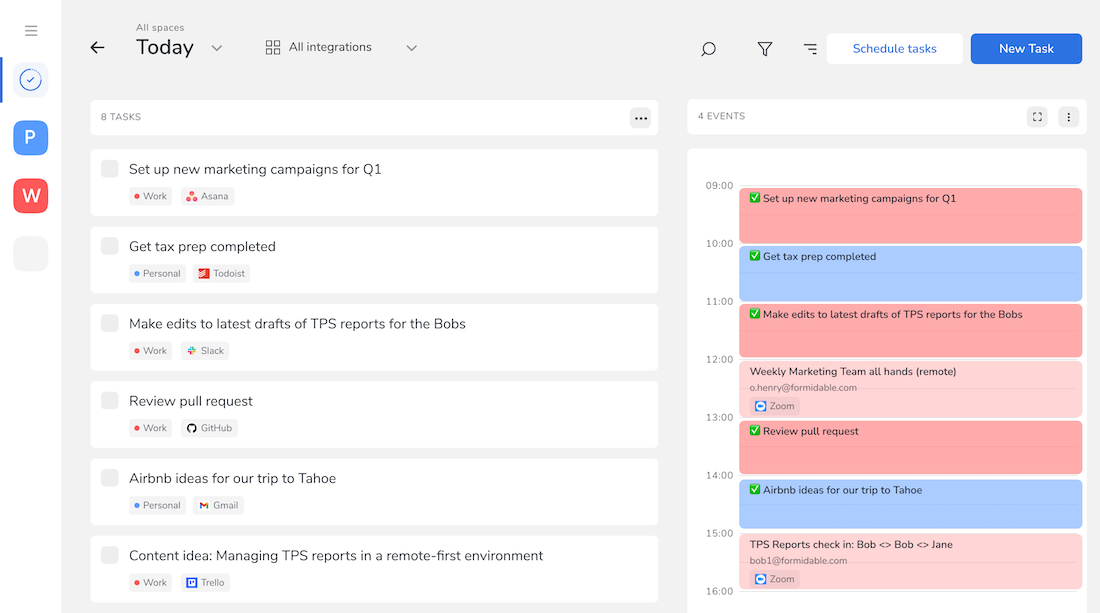Timebox and take breaks
For the sixth article in our Find Your Flow series, we share why you should timebox, and take more breaks to boost your flow and productivity.
Are you the type of person who sits down at their desk and works straight through the entire workday? You take no breaks, never get distracted, and just keep getting stuff done. Congratulations, you are extremely rare or almost certainly a robot.
Of course, no one is really like that. But, in traditional offices, we are expected to be at our desks, heads down working. Time away from our desk is slacking off and wasting company time.
Let’s face it, the human brain isn’t wired to work eight hours straight. And, as we’ve talked about a lot in this series, time away can be your most productive.
But how can we make sure we take time away to refresh our brains while also being hyperfocused and in flow while working?
Answer: the magic of the timebox.
Why can’t I just be productive all day?
With any sort of goal, if you want to achieve something significant, it’s essential to break it into smaller goals or habits. For example, if you’re training for a marathon, your first goal isn’t running 26.2 miles. Instead, you’ll set a goal to run 5 miles, then 10, then 15, and so on.
The same goes for your workday. If you sit at your desk intending to be productive for eight hours straight, you won’t make it that long in a hyperfocused flow state. Inevitably you’ll get distracted by your phone or social media or organizing your office. Often, those distractions capture your attention for much longer than intended.
Like running a marathon, you need to set achievable goals for work and be realistic about how long you can stay focused.
How does timeboxing work?
Timeboxing is pretty simple. Set a timer for a focused period of work. Once the timer goes off, start a timer for your break.
The most popular method is the Pomodoro Technique, with 25 minutes of focused work, followed by 5-minute breaks.
For many, the 25/5 interval is too short. Some people do 45/15, 60/15, even 52/17. The key is to experiment and find the intervals that work best for you. A good rule is, if you rarely check the timer to see how close you are to being done or if you aren’t getting distracted during that work timebox, it’s a good length of time. Similarly, when the timer goes off to end your breaks, are you generally ready to get back to work, or do you usually feel like you need more time?
We’ve written quite a bit about this subject if you’d like to dive deeper into our thoughts.
What to do with those breaks?
The beauty of timeboxing is it reflects actual human behavior. We inevitably take breaks throughout the day. But those short breaks can sometimes extend into long periods of lost focus or productivity. If we allocate time for breaks, then we have better control over their length.
Use the breaks for whatever you’d like. It could be browsing social media if that helps you reset. Or, better yet, take a quick walk, read a book, or meditate.
One suggestion we have is to change the scenery away from your computer or office space. So even if you want to browse social media, move to another room or somewhere out of the space where you get work done to help you reset your brain to relax mode.
How to timebox with Taskable
Taskable doesn’t have a timer feature yet, but it’s on our roadmap. You can add your vote here if you’d like to see this feature in Taskable sooner rather than later.
So the best way is to use a third-party timebox app - and there are lots to choose from. Our personal favorite for Mac users is Flow. If you prefer to be less digital, you could even use a trusty kitchen or egg timer.
As always, keep Taskable open while you use your timer so when you complete one task, you can quickly move on to the next on your list, making the most of your time in flow.
Happy timeboxing!

Top recommendations
- Casino En Ligne France
- Casino Fiable En Ligne
- Casino Online
- Site De Paris Sportif Belgique
- Site Paris Sportif Belgique
- Meilleur Site Casino En Ligne Belgique
- Jeux Casino En Ligne
- Bookmaker Non Aams
- Casino Non Aams Sicuri
- App Di Scommesse
- Parier En Crypto
- Site De Paris Sportif
- Sweet Bonanza Avis
- Paris Sportif Mma Ufc
- ライブ カジノ
- オンラインカジノ 出金 早い
- Nha Cai Den Tu Chau Au
- Casino Crypto Sans Kyc
- Meilleurs Sites Paris Sportifs
- Casino En Ligne Nouveau
- Meilleur Nouveau Casino En Ligne
- Casino En Ligne Français
- Scommesse In Crypto
- Casino Non Aams
- Casino En Ligne
- Top Casino En Ligne
- Casino Retrait Rapide
- Casino En Ligne France
- Casino Non Aams
- Free Spin Senza Deposito Immediato
- Siti Non Aams Sicuri
- Casino Online Non Aams
- 꽁머니 토토
- Casino Fiable En Ligne
- Meilleur Casino En Ligne
- Casino En Ligne Francais
- Nouveaux Casinos En Ligne




